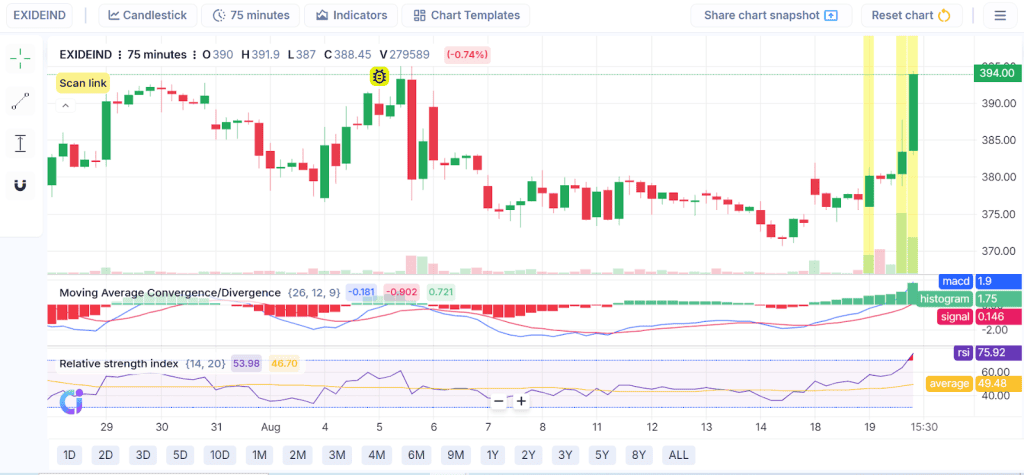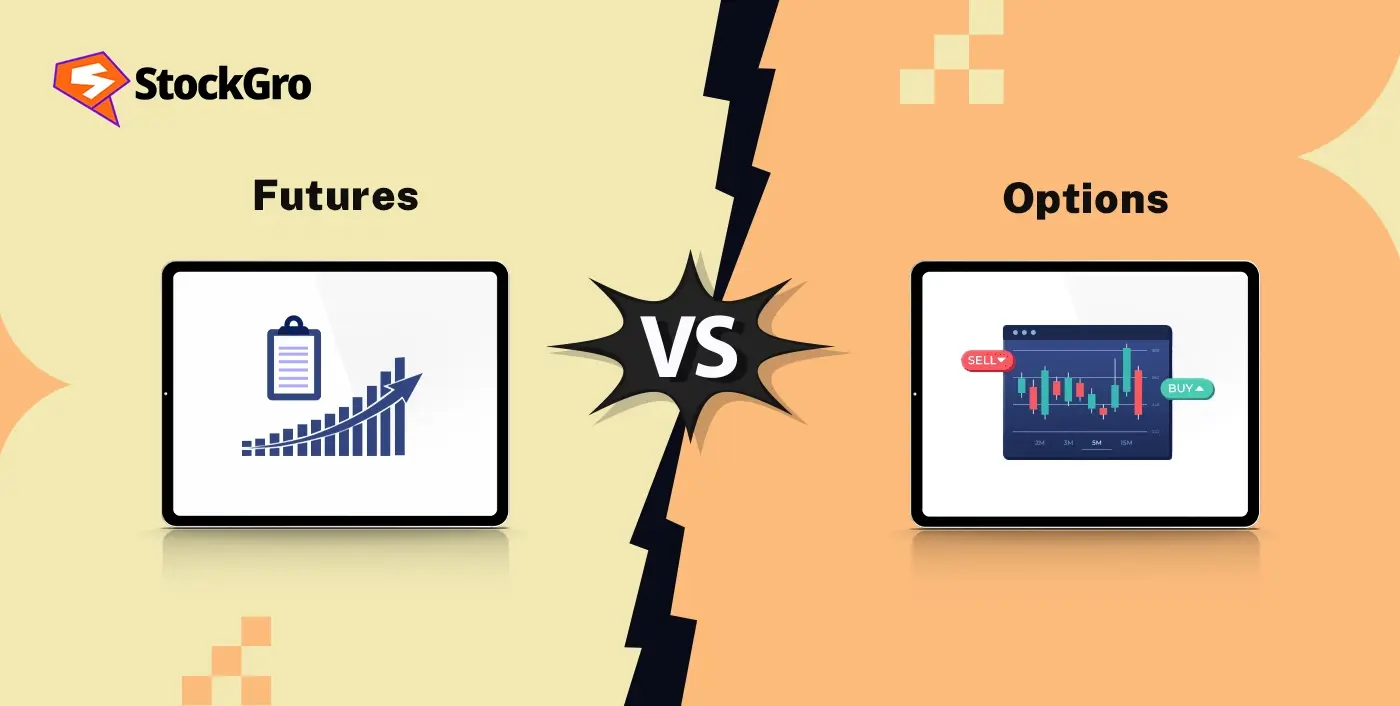
Options trading is a flexible choice but needs adaptability, as with the modification in market conditions, sometimes your primary trade setup no longer matches your outlook. Instead of quitting probable earnings or exiting a position at a loss, traders can opt for a strategy called rolling options.
Roll options lets you adjust your expiration dates or strike prices while keeping your position active. This guide explains what rolling is, when to do it, and how investors can apply different rolling techniques efficiently in options trading.
What Does Rolling an Option Mean?
Rolling an option means you’re closing your ongoing position and opening a fresh one simultaneously, typically with a different set price or expiry date or both. This adjustment lets traders adapt to modifying market situations without quitting their entire strategy. Let’s say, if your call option is about to expire but you still have faith in the stock’s sustainable potential, you might choose roll forward options and select the later expiration date. Rolling doesn’t mean avoiding losses entirely, but improving flexibility while strategically managing risk.
When Should You Roll an Option?
Deciding when to apply the roll options technique depends on the market movements and your goals. Common scenarios include:
- Approaching Expiration: If your option is moving towards the expiry date, but you have faith in the market movements, rolling options offer more duration.
- Handling Risk: When an option is far away in-the-money or out-of-the-money, roll options can settle it with your market prospects.
- Managing Premiums: Investors may choose roll options to reduce capital at risk or capture more premium.
- Earnings or Market Events: Rolling may position you for better volatility before major announcements.
In brief, you roll an option when you want to stay in the trade by adjusting parameters.
Common Roll Options Strategies
Rolling Up
Rolling up means moving to a higher strike price, often used with call options. For instance, if a stock significantly rises and your call is deep in-the-money, rolling up locks in profits while still maintaining upside potential. Investors may pay a debit to roll up but often apply it to capture profits while managing their exposure.
Rolling Down
Rolling down is the exact reverse of rolling up, i.e., moving to a lower strike price. This is more common with put options or when a stock declines, but the investor wants to keep the option relevant. Rolling down helps investors reposition closer to the latest stock price, potentially regaining profitability.
Rolling Forward (Out)
Roll out options or roll forward options extend the expiry date, which is one of the most common roll strategies, especially when time is running out but a trade is still valid. Let’s say, if you own a call expiring in one week but the stock has not made its expected move yet, roll out options lets you maintain exposure with more time for the trade to play out.
Rolling Covered Calls
Covered calls are a prevalent options strategy where investors sell call options against their already owned stocks. When the short call is near expiration, roll options strategy is introduced. If the option is in the money, you can choose to roll forward options to the following date or to a greater set price. This helps you make premium revenue while still holding the asset. Rolling covered calls is often used to balance income generation with the desire to keep stock ownership intact for an extended period.
Rolling Puts
Rolling puts work similarly but involves speculation or hedging strategies. For example, if you trade a cash-secured put and the stock approaches the set price, you may roll down to a lower set price for risk management or roll forward to spread out the trade. Rolling puts offer flexibility, whether traders aim to collect a premium or position themselves to potentially buy shares at a favourable price.
Risks & Benefits of Rolling Options
Benefits
- More trading time without closing the idea: Traders can keep the same policy intact by extending their contract further, instead of exiting.
- Modify set prices to match new market movements: Roll options help adjust the strike to reflect the stock’s ongoing trend efficiently.
- Offers flexibility for hedging strategies or incomes: Beneficial for protective puts or covered calls, providing investors ability to adapt strategies with market movements.
- Helps in risk management by avoiding assignments in some cases: Rolling covered calls or puts can lessen the likelihood of being forced into buying stock or delivering shares unexpectedly.
Risks
- Rolling may include extra debits: Sometimes roll options involve paying more premiums, affecting overall profitability.
- Doesn’t eliminate already incurred losses: If the trade is already unfavourable for you, rolling can’t eliminate previous losses; it only redefines future exposure.
- Market conditions may still be unfavourable for the new position: Even after adjusting, the stock could continue moving in an unfavourable direction.
- To avoid unfavourable fills, execution demands careful timing: Bid-ask spread can widen, and poor execution can eat into probable profit.
While roll options offer adaptability and make trading seamless, it’s not a perfect strategy. Clear exit plans with risk management remain critical for sustainable gains.
How to Roll an Option Step-by-Step
Examine Your Position: Start by evaluating your latest option and look at how much time is left till expiry, whether it’s in-the-money or out-of-the-money. If the trend still matches your actual goal (income, speculation, or hedging). This helps you decide whether rolling can be beneficial.
Pick a Roll Strategy: Choose the roll type depending on your viewpoint. Rolling up moves to a higher set price to get more upside, safeguarding against downside risk, and roll forward options increases duration for a potential trade.
Enter a Roll Order: Most trading platforms allow you to execute a “roll” order in one step, indicating you’re closing the existing option and opening another one simultaneously, saving time and lessening execution risk.
Double-Check Costs: Before sending anything, make sure you know if the roll results in a debit that you pay for the modification or a credit that you gain as an extra premium. These costs should align with your risk tolerance as they directly impact potential gains.
Manage the Latest Trend: Rolling is not always the best thing to do. You’ll still need to monitor market conditions, implied volatility, and expiration. Be ready to adjust against unfavourable conditions, because rolling is just another tool in current trade management.
Example: Rolling an Option

The idea of rolling an option can be seen in this EXIDEIND chart on a 75-minute timeframe. Imagine you bet that the stock price wouldn’t go up much and sold a call option with a strike price close to 380. The price unexpectedly rose past 390, as shown by the powerful green candles on the right side of the chart, following a period of flat action.
Here, an options trader may elect to “roll” the option, which means they’ll close their current short call at a loss and open a new call with a higher strike (like 395 or 400) and a later expiration. Without taking on limitless risk, the trader can keep a similar position and give the stock more room to rise.
It may be necessary to make adjustments or roll the option rather than leaving the original position vulnerable, as indicators such as the MACD turning positive and the RSI hitting the overbought area (75.92) indicate high momentum.
Conclusion
Roll options strategy is a treasured tool for investors seeking an adaptation without leaving their strategies. Whether you roll up to capture more profits, roll down to adjust for losses, or roll forward to gain more time, the strategy offers flexibility in uncertain markets. Covered calls and puts can also benefit from rolling to balance risk management with income. However, roll options don’t abolish risks or eliminate losses. Traders must use it as a part of an extensive trading strategy with clear goals. Understanding when and how to roll options can help investors handle their position more efficiently and boost sustainable outcomes.
FAQs
Rolling options is an adjustment strategy where an investor closes the current option position and opens a fresh one, usually with a different set price, expiration date, or both. The goal? To keep the trade going, handle possible risk, or get an extra premium without giving up the entire strategy. Rolling helps keep a position matched with ongoing market conditions while maintaining flexibility. It’s typically used in covered calls, spreads, or naked positions to adapt as markets move.
Yes, both puts and calls can be rolled. Rolling puts is something traders often do for handling downside risk or adjusting short put positions to gain more premium. Let’s say, if a short put is moving in the money or approaching expiration, it can be rolled down or out to lessen assignment risk. Similarly, calls are often rolled up or forwarded to capture upside. The principle is the same, close the old option and simultaneously open a new one better suited to current conditions.
Traders usually roll options to handle risk, extend timing, or get extra premium. If the market moves against their original trade, rolling allows them to adjust without closing the strategy entirely. For instance, rolling forward buys more time for a position to work, while rolling up or down aligns with new price levels. Some traders roll to avoid early assignment or to lock in partial gains. In the end, knowing how to role options keeps trades flexible and consistent with changing market dynamics.
Rolling an option may cost money depending on market conditions. While choosing the new option, if it costs more than the previous option, it’s a debit. If you gain more than what is spent, that’s a credit. But you must consider the commissions or brokerage fees. Whether debit or credit, the price influences the investor’s risk-reward profile, so they must carefully analyze whether rolling matches with their strategy and predictable results.
Options are often rolled when they’re approaching expiry, if the price is moving against the position, or the trader wants to get more time value. Let’s say, if a short option is moving in the money, rolling can lessen assignment risk. If the idea still works but needs more time, rolling forward extends the trade. Timing is precious, where rolling too early might waste premium, while rolling too late may limit flexibility. Balancing between risk management and opportunity is important in the roll options strategy.
Choosing what’s better between rolling or closing depends on the trader’s purpose. Closing indicates the termination of the trade, locking in profits or controlling losses, whereas rolling options keeps the strategy intact by fine-tuning set prices or expirations to match with ongoing situations. Traders roll if they still believe in the trade’s thesis but need more time or better positioning. Closing is safer when the viewpoint has changed or risk tolerance is reached. The choice really comes down to market outlook, costs, and risk appetite.
Rolling a covered call is when you close your ongoing short call and sell a new one, usually with a later expiration or another strike. Say, the stock price is close to the set price, and the expiration is approaching, a trader might roll forward to get more time or roll up to capture more upside. Most brokers offer a “roll order” to execute this in one step. The adjustment helps manage assignment risk while continuing to generate premium from the stock holding.
Rolling out an option means exiting the ongoing contract and opening a new one with a later expiration date, but typically the same strike price. Traders do this when they believe their outlook is still valid, but the original option is expiring soon. By rolling out, they gain extra time for the trade to work while maintaining the same market exposure. It’s a common strategy for covered calls, spreads, or naked positions when time, not direction, is the limiting factor.

